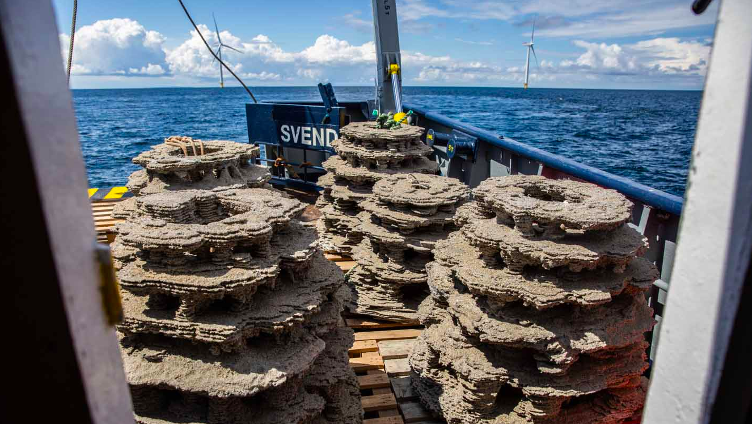Ørsted, Denmark’s largest energy company, has now partnered with the World Wildlife Fund (WWF) Denmark to restore the marine biodiversity of the Kattegat Strait, the body of water between Denmark and Sweden. How? By experimenting with 3D printed reefs.
Humans Disrupt the Food Chain
Over the last three decades, the waters between Denmark and Sweden have seen a dramatic drop in the native cod population with numbers plummeting nearly 90% compared to their population in 1990. While overfishing is mainly to blame for the cod’s initial decline, other underlying factors have prevented the fish from returning to healthier levels.
In the cod’s absence, their main prey, the green crab, overran the ecosystem and inadvertently destroyed the seagrasses vital to protecting juvenile cod from larger predators. Without the grasses, juvenile cod were easy prey and were not able to grow to maturity. The loss of the cod threatens to disrupt the ecosystem permanently, and the lives of the thousands of people who depend on the strait daily.
WWF Denmark and Ørsted knew they needed a solution. To bring back the cod and restore balance to Kattegat, the partners turned to 3D printed reefs.
3D Printed Reefs
Artificial reefs aren’t new and sea creatures are known to latch onto anything that offers them shelter in the ocean. Just look at a pier or a boat next time you’re on the cost. It will surely be covered with organisms.
However, the team didn’t plan to throw just anything in the ocean and call it a day. No, they wanted to engineer a habitat that would mimic the species’ natural shelters, while demonstrating biocompatibility with the local area when the reef began to regenerate.
Together, the two partners designed the tiered structures seen above, and commissioned Italian company D-Shape to print the “reefs.” Using a special concrete that incorporates sand from the Kattegat seabed, the structures give the fish an ideal place to hide and nest, improving their chances of surviving against predators. These artificial reefs will complement the existing boulder reefs Ørsted built when designing the Anholt Offshore Wind Farm in 2012-2013, and they hope these twelve new shelters will be the sanctuary the fish need to regenerate the Kattegat cod population, as well as to improve the surrounding ecosystem.
It may take several years to see how effective these 3D printed reefs are at helping to restore the cod population; however, similar past initiatives have proved successful in other parts of the world. So, that could be a good omen for this project, too. While this technology won’t combat rising water temperatures or the acidification of oceans, it is helpful for restoration. We are excited to watch the progress of this technology and this project moving forward, and we have our fingers crossed that 3D printing can help make a lasting impact on the Kattegat Strait.
Subscribe to Our Email Newsletter
Stay up-to-date on all the latest news from the 3D printing industry and receive information and offers from third party vendors.
You May Also Like
Gorilla Sports GE’s First 3D Printed Titanium Cast
How do you help a gorilla with a broken arm? Sounds like the start of a bad joke a zookeeper might tell, but it’s an actual dilemma recently faced by...
Nylon 3D Printed Parts Made More Functional with Coatings & Colors
Parts 3D printed from polyamide (PA, Nylon) 12 using powder bed fusion (PBF) are a mainstay in the additive manufacturing (AM) industry. While post-finishing processes have improved the porosity of...
$25M to Back Sintavia’s Largest Expansion of Metal 3D Printing Capacity Since 2019
Sintavia, the digital manufacturing company specializing in mission-critical parts for strategic sectors, announced a $25 million investment to increase its production capacity, the largest expansion to its operations since 2019....
Velo3D Initiates Public Offering in a Bid to Strengthen Financial Foundations and Drive Future Growth
Velo3D (NYSE: VLD) has been among a number of publicly traded 3D printing firms that have attempted to weather the current macroeconomic climate. After posting a challenging financial report for 2023,...

































